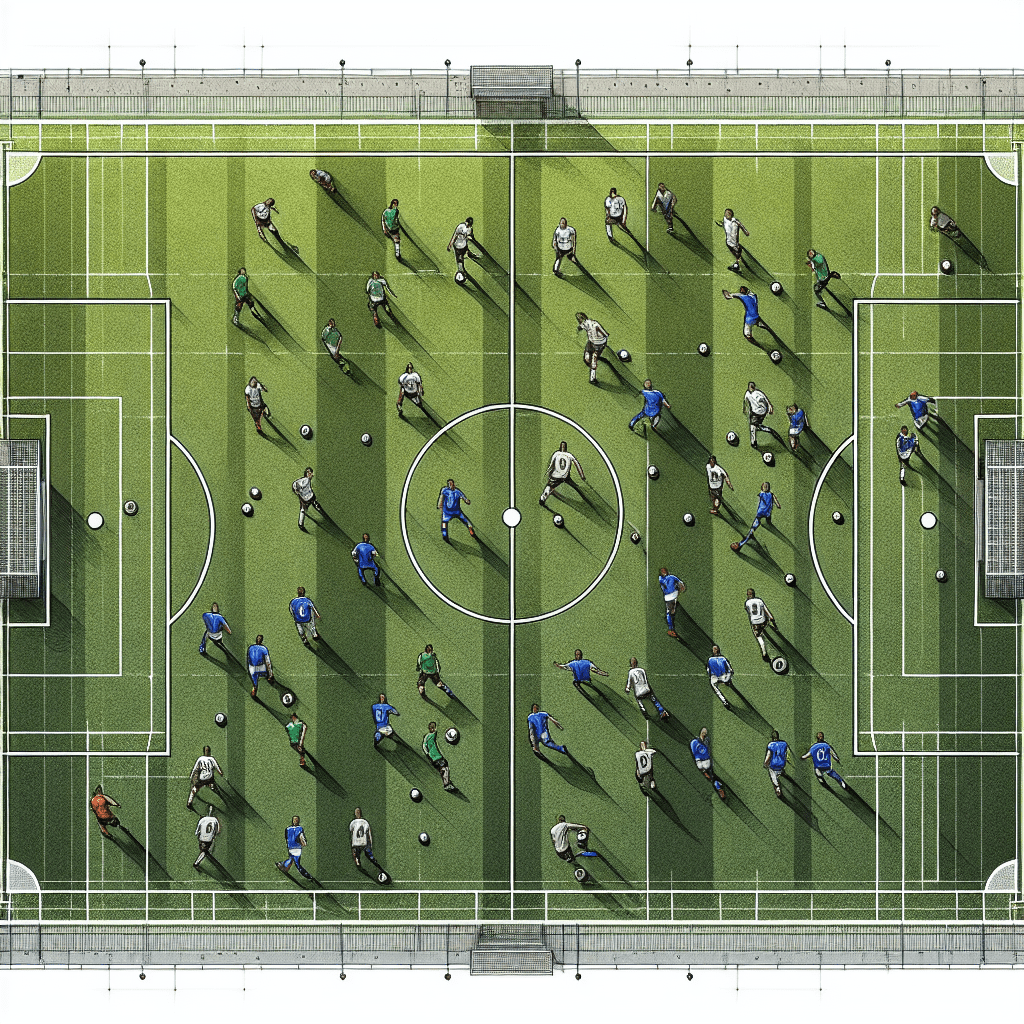[ad_1]
Mastering the Game: An In-depth Guide to Soccer’s Most Effective Tactical Formations
Soccer, known as football outside North America, is a sport steeped in history, culture, and an intricate understanding of strategy. At the heart of this strategy are the various tactical formations employed by teams to outmaneuver their opponents. These formations are the bedrock upon which teams structure their defense, orchestrate their midfield, and plan their attacks. This guide delves deep into the most effective tactical formations in soccer, exploring their advantages, how they are best implemented, and the kind of players that fit into them, providing a comprehensive understanding for coaches, players, and fans alike.
1. The Classic 4-4-2 Formation
Possibly one of the most well-known and widely used formations in soccer, the 4-4-2 is favored for its balance and flexibility. Structured as four defenders, four midfielders, and two forwards, this formation allows teams to be solid in defense while also being potent in attack. It relies on the midfielders’ ability to work both defensively and offensively, often requiring box-to-box midfielders who can contribute to both ends of the pitch. The 4-4-2 is particularly effective against teams that play with a lone striker, as it allows the defensive line to maintain numerical superiority.
2. The Dynamic 4-3-3 Formation
The 4-3-3 is a formation that has gained popularity for its attacking prowess and is favored by teams with strong, versatile wingers. It consists of four defenders, three midfielders, and three forwards. The key to this formation is the fluidity and interchangeability of the front three, allowing for a dynamic and unpredictable attacking front. The midfield trio often comprises one defensive midfielder and two central midfielders who contribute to both defense and attack. This formation requires technically gifted players who are comfortable possessing the ball and can transition quickly from defense to attack.
3. The Compact 4-2-3-1 Formation
The 4-2-3-1 is a highly versatile formation that offers a great balance between defense and attack. It features four defenders, two defensive midfielders, three attacking midfielders, and a lone striker. This formation allows teams to control the midfield effectively, thanks to the presence of two holding midfielders who can break down opposition attacks. The attacking midfielders must be adept at creating chances and providing support to the lone striker. This formation is particularly effective against teams that pack the midfield, as it allows for numerical superiority in that area.
4. The Solid 3-5-2 Formation
A formation that has seen a resurgence in recent years, the 3-5-2 offers solidity in defense and numbers in midfield while still maintaining a threat in attack with two strikers. It is structured with three central defenders, two wing-backs, three midfielders, and two forwards. The critical aspect of this formation is the role of the wing-backs, who must have the stamina and speed to contribute both defensively and offensively. The 3-5-2 can be particularly effective in countering teams that use wide areas to attack, as it allows for a compact central structure while still having players who can cover wide defensive responsibilities.
5. The Control-Oriented 3-4-3 Formation
The 3-4-3 formation is similar to 3-5-2 but offers even more in terms of attacking options. It is designed with three defenders, four midfielders (including two wing-backs), and three forwards. This formation excels in controlling the game through possession and provides ample width. The three forwards allow for a high press, potentially overwhelming opposition defenses. However, it requires disciplined central midfielders and defenders who are comfortable on the ball and can effectively manage the spaces left behind by the advancing wing-backs.
FAQs:
Q: What formation is best for a team with strong wingers?
A: The 4-3-3 formation is ideal for teams with strong wingers due to its utilization of three forwards, allowing wingers to exploit the wide areas and create scoring opportunities.
Q: How can a team transition from defense to attack effectively in a 4-2-3-1 formation?
A: Effective transition in a 4-2-3-1 formation relies on the defensive midfielders’ ability to distribute the ball efficiently to the attacking midfielders or directly to the striker. Quick, precise passing and movement off the ball are essential for exploiting spaces in the opposition’s defense.
Q: Is the 3-5-2 formation defensively weak?
A: Not necessarily. While the 3-5-2 formation has three central defenders, making it seem potentially vulnerable on the flanks, the presence of two wing-backs who can drop back into defensive positions helps mitigate this weakness. The key is ensuring the wing-backs are disciplined and have the stamina to fulfill both defensive and offensive duties.
Q: How important are midfielders in a 4-4-2 formation?
A: Midfielders are crucial in a 4-4-2 formation as they are the linchpins that connect defense and attack. Effective box-to-box midfielders contribute defensively by breaking up opposition plays and offensively by supporting the forwards, providing a balanced team dynamic.
Q: Can a formation dictate the outcome of a match?
A: While a tactical formation is a critical component of a team’s strategy, it alone does not dictate the outcome of a match. Success depends on the players’ understanding of their roles within the formation, their ability to execute the manager’s game plan, and their adaptability to the dynamic nature of the game. Effective communication, teamwork, and individual skill also play significant roles in determining a match’s outcome.
In conclusion, understanding and mastering the right tactical formation can endow a team with a significant strategic advantage. However, the flexibility to adapt, the players’ proficiency in their roles, and the ability to read the game are equally crucial. No formation is inherently superior; success comes from a holistic approach that considers the team’s strengths, the opposition’s weaknesses, and the context of the match itself. Soccer is a beautiful game because of its complexity, and tactical formations are one of the most fascinating aspects of this global sport.
[ad_2]






